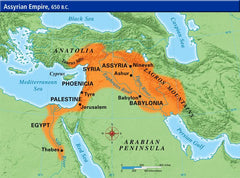Your cart is empty now.

Book Review: The Reformed Baptism Form (3)
The Reformed Baptism Form: A Commentary, B. Wielenga, trans. Annemie Godbehere, ed. David J. Engelsma. Reformed Free Publishing Association, 2016, 425 pages. Reviewed by Rev. Nathan J. Langerak.
Wielenga throughout the commentary deals with the text of the baptism form. That is the strength of his commentary. The text as it was in use in his day differed at certain points from the official text adopted by the Synod of Dordt. At places he suggests emendations and changes to the text used in his day, in order to bring it into conformity with the official text. Of note is Wielenga’s comments on the words “or witnesses” in a question to the parents. This phrase is a remnant of Roman Catholic theology and practice in the administration of baptism. This phrase is also included in the English received text. The practical relevance of his comments is that in the administration of baptism today these words should be omitted as an intrusion into the form.
Wielenga also deals extensively with disputed phrases. By means of them those in the Dutch Reformed churches who disagreed with the doctrine of the form tried to foist another covenantal doctrine on the form. He devotes a particularly long section to the phrase in the question to parents, “sanctified in Christ.” In explaining this long-disputed phrase, he is at his scholarly, theological, and polemical best. He points out that in his day this issue was already two centuries old. It was not two centuries old because the baptism form was unclear on what it meant by “sanctified in Christ,” but on account of the exegetical dishonesty and dogmatical agenda of many theologians when they explained the baptism form. Wielenga proves that the baptism form can mean nothing else by this language than that the children of believers are really, internally, and savingly united to Christ and sanctified in him and that the phrase does not mean merely to be set apart in an outward way or placed in a better position to be saved.
He also contradicts and condemns as “Arminian” the opinion that this phrase means real, internal sanctification and that it refers to “all of the children” of believers, not only to the elect children of believers (311). This position that he criticizes as Arminian is a popular doctrine of the covenant promoted today in Reformed churches, in which all the children are said to be incorporated into Christ and sanctified internally by him. Necessarily this means that the promise of God, the grace of God, the Spirit of God, and the covenant of God ultimately fail in many cases.
Wielenga accuses those who taught these things of reading their own theology into the form. About this reading of one’s theology into the form in order to deny the clear teaching of the form, he says,
Some people may have a different view of the doctrine of baptism. They may call the position of the compilers [of the baptism form] untenable…Let them be frank and say, “I do not agree with it”…But do not fudge on the matter. Our exegetical [explaining the plain meaning of the form] conscience objects to someone’s eisegetical [reading one’s theology into the form] doctrine of baptism, in order to support it with the authority of this legacy of our fathers. This must be stopped. (320)
The dispute over the covenantal doctrine of the form has not and still today is not driven by simply explaining the words of the form, but by a “clash between system and system” (315). To interpret “sanctified in Christ” as referring to a mere objective, or outward, setting apart is the result of a dishonest imposition of a foreign system on the form. To interpret “sanctified in Christ” as referring to all children brought for baptism and not the elect only is the imposition of Arminianism on the form. These other views imposed on the form belonged to the church in her “decline” and were introduced in “the days of ecclesiastical backsliding” and espoused a sacramental and covenantal doctrine “that was openly detested and contested by our fathers,” a doctrine “that in the century of the Reformation was already held by the Socianians and Anabaptists and later by the Remonstrants and rationalists” (317).
That just such a covenantal doctrine, exposed by one’s interpretation of this crucial phrase as a mere setting apart, is in fact widely held in Reformed churches explains the strange phenomenon that churches with Reformed in their names and that use the baptism form have rapprochement with Baptists, who condemn the baptism of infants. And some of these Reformed churches even allow membership to those who do not bring their children for baptism. Long gone is the conviction of the Reformed faith toward Baptist theology as expressed in article 34 of the Belgic Confession: “Therefore we detest the error of the Anabaptists, who are not content with the one only baptism they have once received, and moreover condemn the baptism of infants”—a detestation that manifests itself in a visible separation from them and vocal condemnation of their false doctrine. Wielenga points out that the covenantal doctrine of these ecclesiastically backslidden Reformed churches and the Baptists is basically the same. By teaching that the phrase means merely an external setting apart in an external covenant, they regard baptism “as some kind of confessional act…It is nothing other than a symbol of transition from paganism to Christianity, a sign of faith and conversion or promise of obedience” (317).
Whoever would explain this phrase properly, Wielenga insists, “must consider the form from the situation in which it emerged and regard it against the background of the covenant view that it encompassed” (317). The situation out of which the form emerged was the Reformation’s and ultimately the Synod of Dordt’s teaching of salvation by sovereign and particular grace, a salvation governed by the truth of election and reprobation. Whoever will understand the form’s covenantal doctrine and will be faithful to it cannot espouse a covenantal doctrine that contradicts and ultimately overthrows the Canons’ teaching about sovereign grace, that God is gracious to his elect people alone. In the preaching of the gospel that precedes the sacrament and in the administration of the sacrament itself, God does not offer or promise grace to the reprobate, much less incorporate them into his covenant. That situation out of which the form came gave rise to the doctrine of the covenant found in the form. This doctrine Wielenga explains by quoting Herman Bavinck: “Election and church, the internal and external side of the covenant…held together as much as possible” (316). Wielenga explains this as the position of those “who sought as long and as closely as possible to maintain the unity of election and covenant (315). Covenant controlled by election is the covenantal doctrine of the baptism form. The question of one’s doctrine of the covenant is ultimately not a question only of a covenantal doctrine but a question of the doctrine of grace and the truth of God. Is the grace of God and thus also the God of that grace a failure who promises to all and fails to come through for many? Or is he the sovereign God of scripture who sits in the heavens and does all his pleasure?
I do not pretend that Wielenga confesses with perfect clarity all the points of doctrine about the covenant as they are now confessed in the Protestant Reformed Churches. The doctrine of the covenant has been developed since Wielenga, particularly through the fierce battle for the truth of sovereign grace in the covenant that was waged in the late forties and early fifties in the Protestant Reformed denomination against the very view of the covenant that Wielenga calls Arminian, that the promise of God is made to all the baptized. By means of that painful controversy the “unhappy and largely infertile baptismal dispute” and the “wicked confusion,” which it created for centuries in Reformed churches and which is noted and lamented by Wielenga, was settled and the truth won (321). The current unhappy dispute that exists and the wicked confusion that are being created today can be settled in no other way than by adopting the covenantal view of the form: the covenant is controlled by election.
No honest reader can possibly read this book and suppose anything else than that this basic doctrine of the covenant taught in the Protestant Reformed Churches is the basic doctrine of the baptism form and of the worthies who adopted it. One might disagree with it, but let him be honest and say that, as Wielenga exhorts. Any other view of “sanctified in Christ” than that espoused by Wielenga, Kuyper, and Bavinck and their spiritual heirs, who teach that the words mean internal sanctification of the elect children of believers, is “out of place in the baptism form and is also not in keeping with the doctrine of the covenant that predominated in the church of the Reformation” (326).
May the commentary serve the promotion of the covenantal theology of the Reformation and of the Reformed fathers, and let the reader judge whether his or her theology is Reformed, like that of the baptism form.
________________
Rev. Nathan Langerak is pastor of the Protestant Reformed Church in Crete, Illinois. Rev. Langerak was asked by the RFPA to write a book review on this title.
___________
The content of the article above is the sole responsibility of the article author. This article does not necessarily reflect the opinions and beliefs of the Reformed Free Publishing staff or Association, and the article author does not speak for the RFPA.

Donate
Your contributions make it possible for us to reach Christians in more markets and more lands around the world than ever before.
Select Frequency
Enter Amount










